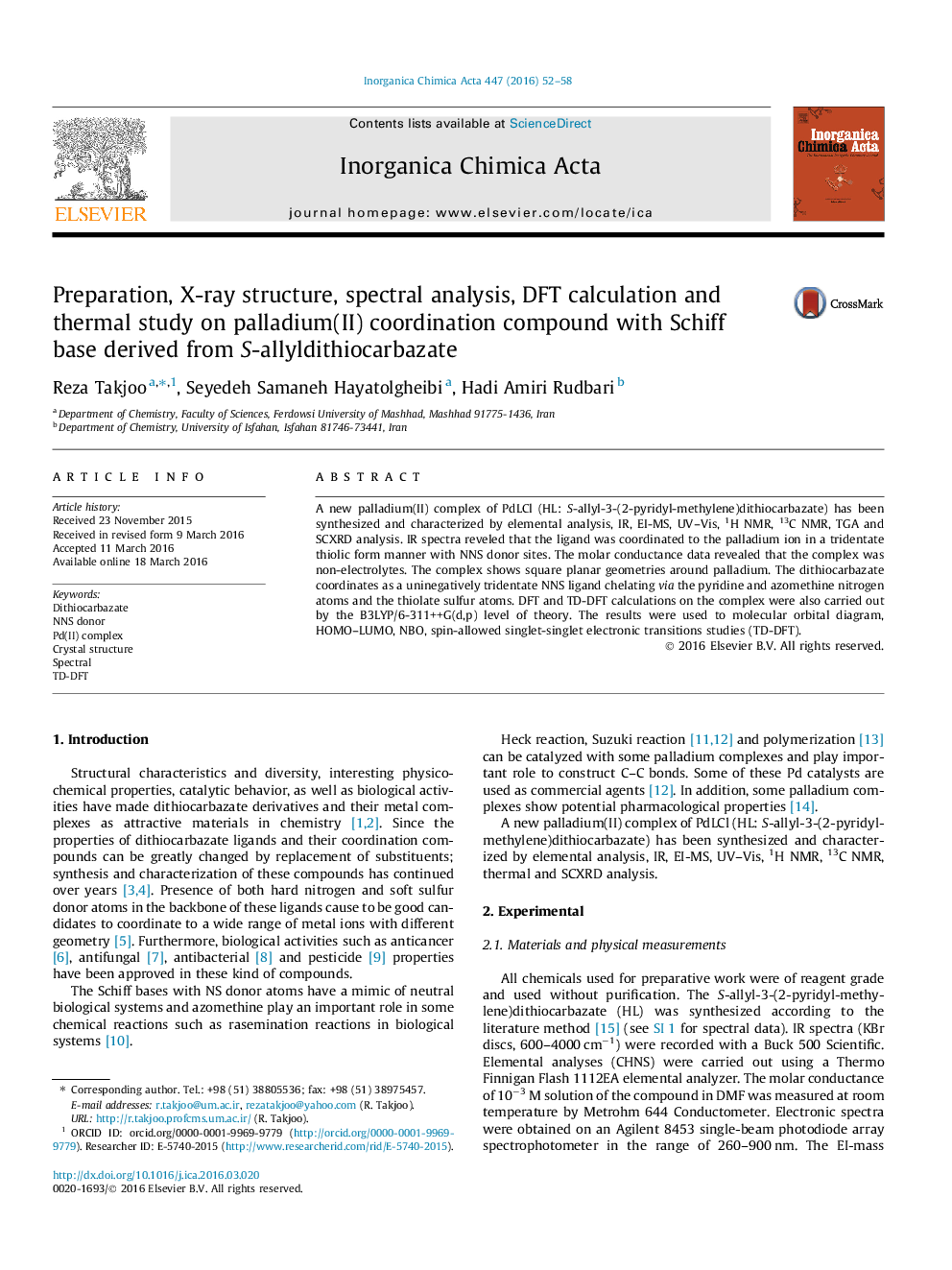| Article ID | Journal | Published Year | Pages | File Type |
|---|---|---|---|---|
| 1307478 | Inorganica Chimica Acta | 2016 | 7 Pages |
•Palladium(II) dithiocarbazate complex is synthesized and characterized.•The compound structure is determined by X-ray studies.•The complex was characterized by elemental analyses, IR, UV–Vis, 1H–13C NMR, TGA and mass.•The DFT calculations for the optimization, Mulliken charge, NBO and TD-DFT are done.
A new palladium(II) complex of PdLCl (HL: S-allyl-3-(2-pyridyl-methylene)dithiocarbazate) has been synthesized and characterized by elemental analysis, IR, EI-MS, UV–Vis, 1H NMR, 13C NMR, TGA and SCXRD analysis. IR spectra reveled that the ligand was coordinated to the palladium ion in a tridentate thiolic form manner with NNS donor sites. The molar conductance data revealed that the complex was non-electrolytes. The complex shows square planar geometries around palladium. The dithiocarbazate coordinates as a uninegatively tridentate NNS ligand chelating via the pyridine and azomethine nitrogen atoms and the thiolate sulfur atoms. DFT and TD-DFT calculations on the complex were also carried out by the B3LYP/6-311++G(d,p) level of theory. The results were used to molecular orbital diagram, HOMO–LUMO, NBO, spin-allowed singlet-singlet electronic transitions studies (TD-DFT).
Graphical abstractNew square planar palladium(II) complex with S-allyl dithiocarbazate was synthesised and characterized by elemental, mass spectrometric, TGA, NMR and X-ray methods. Furthermore the electronic structures of complex and ligand conformers were also elucidated by DFT and TD-DFT calculations.Figure optionsDownload full-size imageDownload as PowerPoint slide
